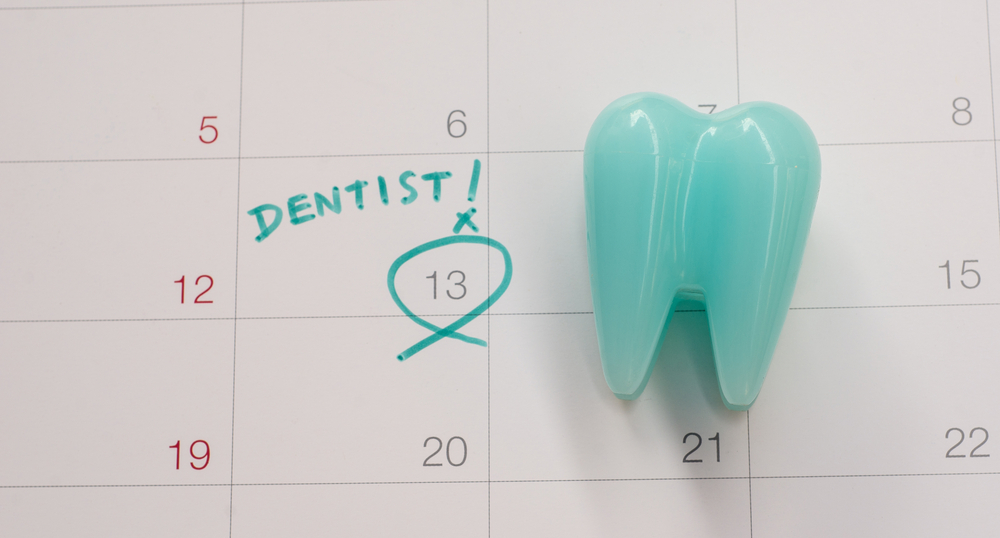Most people visit their dentist every six months for cleaning and checkup. Your dentist may suggest additional or reduced visits depending on how healthy your teeth and gums are.
At your arrival, a hygienist will conduct X-rays of your mouth to identify issues not visible to the naked eye, before having a dentist examine your teeth, gums and bite (how your upper and lower jaws work together).
Checking Your Teeth and Gums
At the start of a dental appointment, the initial step usually entails having a hygienist (pronounced: YEH-gin) remove any plaque and tartar (say: puh-LAK-tar) from your surface of teeth using a metal tip called a scaler to scrape away as much plaque and tartar from sides and below gum line as possible. While this process can take time and be painful if you suffer from gum disease, removing as much plaque and tartar as possible is vitally important to protecting oral health overall.
Next, your hygienist will carefully examine your mouth and gums for signs of tooth decay, enamel erosion, receding gums or infection such as red areas, swelling gum tissues or sores. They’ll also check periodontal pockets – spaces underneath gum tissue where teeth firmly connect to bone – which may deepen over time due to gum disease; your hygienist will measure their depth for you.
A dentist will perform a visual examination of your teeth, inspecting for cracks or chips. They may feel your jawbone from outside your mouth while you bite down to ensure smooth and balanced alignment of jaw bones; grooves of teeth for evidence of grinding/clenching which could wear away at them and lead to cavities; gums for redness, swelling or bleeding as indicators for possible disease; etc.
Once they’ve examined your teeth and gums, a dentist will offer advice as to the next steps for treatment – this might involve scheduling another dental appointment for procedures or simply giving advice about improving brushing and flossing habits.
Prior to visiting, be aware of how long a typical cleaning and exam lasts and allow extra time if there’s paperwork to be filled out. Also if you have insurance, ensure your dentist is part of their network before scheduling an appointment in order to save on co-pay or fee costs.
Cleaning
At first glance, visiting the dentist can seem similar to clearing off your desk: clearing away clutter, dusting it off, and giving it a good scrub. But dental visits also take care of our teeth and gums: during a regular cleaning appointment with both an hygienist and dentist they will remove plaque or tartar buildup on surface teeth as well as below gum line areas – essential part of dental health maintenance that ensures optimal oral health!
Before visiting your dentist, it is wise to brush and floss your teeth and gargle with mouthwash in order to help the hygienist work more efficiently by clearing away food residue between your teeth. Furthermore, this sanitary practice will keep your breath smelling fresh during the cleaning process.
Hygienists will use a small tool to access between your teeth and dislodge any tartar build-up, before polishing with another tool to make them shiny and white. Finally, they may apply fluoride treatments which restore natural minerals found in teeth while protecting against cavities.
Even though regular dental cleaning will solve most issues in your mouth, it’s still wise to listen closely to any advice provided by both dentist and hygienist. They may provide suggestions on how you can maintain oral health at home as well as scheduling follow-up appointments in case any hidden problems are found by them.
Bring any oral appliances you use, whether for sleep apnea or orthodontic work; retainers from orthodontic work or guards designed to prevent clenching and grinding of the teeth, with you. Since they accumulate tartar quickly and need regular cleanings as well, bring these with you so your dentist can use an ultrasonic cleaner to get them pristine again quickly and thoroughly.
X-Rays
X-rays are an integral component of any dental visit as they allow your dentist to see all aspects of your teeth and supporting structures such as jaw bones. An x-ray allows them to identify cavities or any issues not visible with visual inspection, including issues that wouldn’t show up otherwise.
Your dentist will likely take two or four bitewing x-rays during your appointment. These images show them the crown portions of your teeth (those sitting above the gum line) as well as tooth decay between them, helping your dentist diagnose potential problems early. A bitewing is generally taken every year or more frequently depending on your dental history.
Diagnostic x-rays differ slightly from bitewing x-rays and are generally required prior to having dental procedures such as root canal therapy or implants done. They provide more detail, showing your dentist the top portion (crown) to the tip of the root. They may also be necessary if there are specific problem areas such as abscesses or suspicious growths on your tooth or jaw bone that require further evaluation by your dentist.
Notifying your dentist immediately if you suspect pregnancy is important because certain x-rays can expose developing foetuses to harmful radiation exposure. They will be able to adapt their process so you are not exposed to unnecessary radiation levels during the exam process.
A hygienist will assist with your x-rays by positioning and holding your mouth still as they move the X-ray machine around to capture high quality images. Depending on the type of x-rays taken, they may ask you to step outside for one or two minutes as images are recorded; after which time your hygienist will return and complete both cleaning and exam procedures before discussing results of x-rays with you.
As soon as you visit a new dentist, and at regular intervals thereafter, x-rays should be performed on you and at recommended times. Your dentist should establish a schedule based on factors like your age, dental and oral health history and risk factors – it’s crucial that you follow their advice for getting these crucial screenings as not getting them could lead to serious consequences later.
Exam
Dental checkups are an integral component of maintaining healthy teeth and gums. Most individuals should strive to attend biannual dental checkups. At each appointment, your dentist and hygienist will perform various tasks that allow them to assess and monitor your oral health; such as scraping away any tartar or plaque build-up from the surface of your teeth using various tools or scrapers; taking X-rays if necessary and physically inspecting gums, soft palate, throat or neck for abnormalities or potential issues.
An oral exam provides a more thorough evaluation of your mouth and gums than the cleaning portion of an appointment. A comprehensive dental exam usually includes full mouth series X-rays, oral cancer screening, gum disease evaluation and TMJ analysis as well as evaluation of existing restorations and bite analysis by your dentist.
The dentist will review your current dental hygiene routine to evaluate its effectiveness at preventing tooth decay and other problems, and ask questions regarding your general health and lifestyle to gain a better understanding of any risk factors, such as any medications being taken, healing therapies that are currently underway or food/drink allergies.
Your dentist will then conduct a physical inspection of the inside of your mouth to identify early warning signs of gum disease, tooth decay or any other issues. They will also check that your bite remains properly aligned to ensure its strength remains unaltered. Fluoride is an essential mineral that strengthens and prevents cavities; during your dental exam, the dentist should evaluate your individual fluoride needs and recommend either topical or oral treatments to keep your teeth protected between cleanings. Based on the results of your dental exam, your dentist will suggest an appropriate schedule for follow-up appointments. For patients with healthy teeth and gums, this may only require scheduling cleaning sessions every three or four months; for patients who require extensive work or who require more frequent checkups, more frequent appointments may be suggested by their provider.
Disclaimer: The content on this blog is intended for general informational purposes only. It is not a substitute for professional medical advice, diagnosis, or treatment. Always consult qualified healthcare providers for personalized advice. Information regarding plastic surgery, dental treatment, hair transplant, and other medical procedures is educational and not a guarantee of results. We do not assume liability for actions taken based on blog content. Medical knowledge evolves; verify information and consult professionals. External links do not imply endorsement. By using this blog, you agree to these terms.





